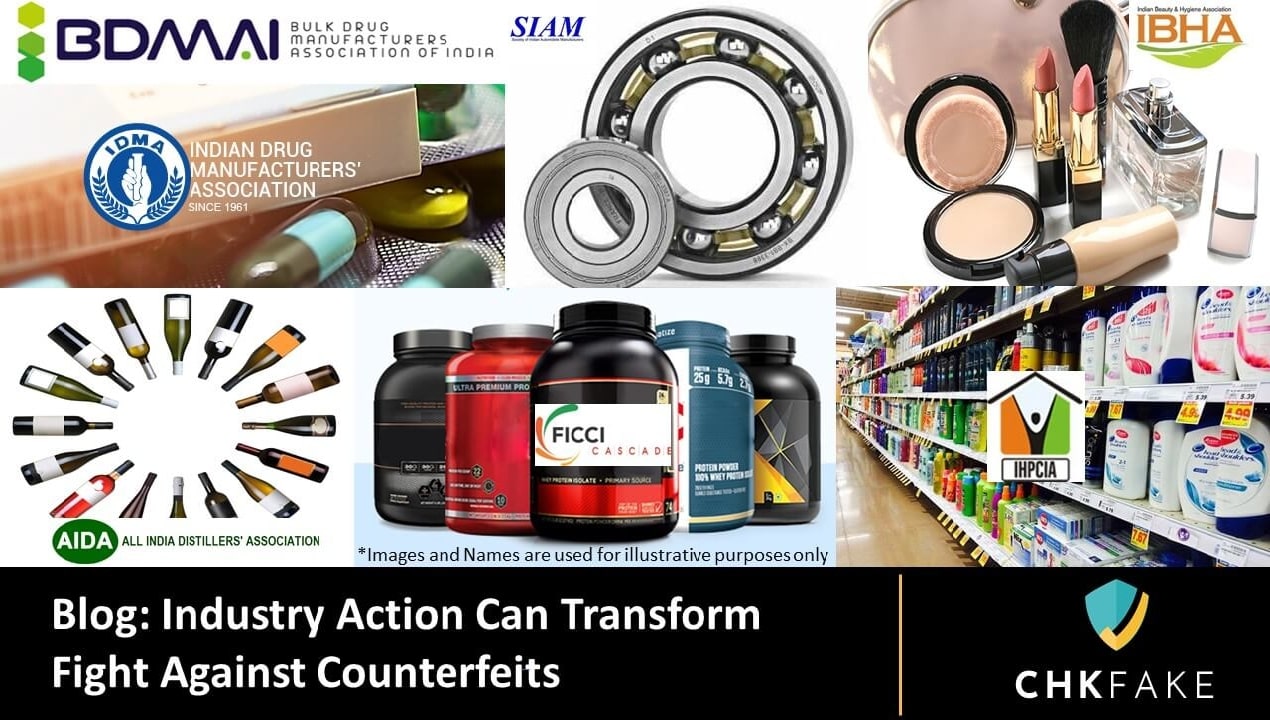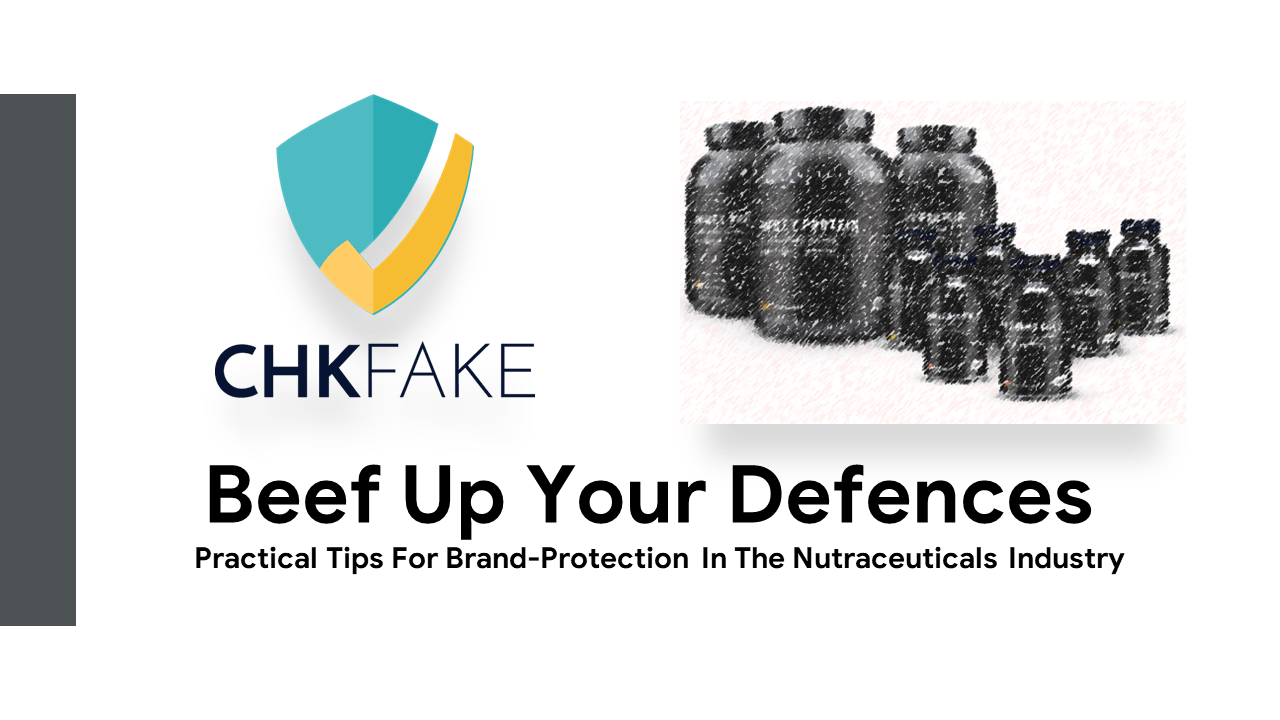
Trade in counterfeit and pirated goods has risen steadily in the last few years–even as overall trade volumes stagnated–and now stands at 3.3% of global trade, according to a new report by the OECD and the EU’s Intellectual Property Office.

Trade in fake goods infringes on trademarks and copyrights and creates profits for the counterfeiter at the expense of companies and governments. Fakes carry a range of health and safety risks. Examples include ineffective prescription drugs, unsafe dental filling materials, fire hazards from poorly wired electronic goods, ineffective fertilizers, and sub-standard chemicals in lipsticks and baby formula.
As per a report by FICCI Cascade, during the last twenty years, the volume of counterfeiting activity has increased 100 times globally. The scale of the counterfeit market and growth is huge and the greatest threat from counterfeits, fakes, lookalikes is today. And yet, 90% of the brands out there are not using any anti-counterfeiting technology. Why is that?
Before we answer this intriguing question, let us first understand what exactly is anti-counterfeiting technology?
Anti-Counterfeiting (AC) technology
Anti-counterfeiting technology enables physical products to be protected against fakes. It provides features which can be incorporated on the packaging or inside the product that counterfeiters can’t copy, and which customers or the value chain can use to distinguish between what is genuine and what is not. It includes methods, techniques, devices, and materials that aid in the protection of forward and backward supply chains of industrial and consumer goods.

The case for AC technology
Back in the days when counterfeiters were small time operators with limited resources, Brands could rely on quality packaging and labels to ensure that their products could not be copied. It was easy to identify a fake from its shoddy packaging and poorly printed labels.
However, things have changed signficantly in the past couple of decades and many Brands have not kept up with the change in the nature and level of the risk they face. It is far easier for counterfeiters to copy any packaging really, due to the following new developments:
1. On-demand manufacturing

Growth of on-demand manufacturing is now servicing the counterfeiting industry. Sophisticated manufacturing capability has developed in multiple geographies such as China, Turkey, Vietnam etc. These manufacturing hubs, with spare capacity are ideally suited to serve counterfeit demand from multiple markets, particularly for high quality packaging copies.
2. Global supply networks

The unintended side effect of globalisation of supply chains is the availability of sophisticated logistics networks to ship counterfeits from one end of the globe to another – finished goods as well as packaging material.
3. Advances in scanning technology

New high resolution scanning technology, including 3D scanners makes it easier to get a scan of label artworks and packaging design, which can then be replicated.
4. Advances in printing technology
High end printers are now available to counterfeiters as well, making it easy for them to incorporate any special effects which the Brand may use on its original labels or packaging.
5. Access to sophisticated moulding equipment
In the past, Brands relied on complex packaging design to make it difficult for counterfeiters to copy their products. However, with on-demand manufacturing, sophisticated moulding equipment is equally accessible to counterfeiters. No packaging design, howsover complex, is beyond the copying capabilities of counterfeiters.
6. Leakage from legitimate supply chains

Unless the Brand is careful in instituting strong internal controls in their supply chain, it often is the source of packaging material for counterfeiters due to pilferage or collusion at different points.
7. Robust recycling value chains
Counterfeiters often lean on the recyclers to source used packages of Brands, allowing re-use and refill of genuine packaging by counterfeiters.
Why are Brands still reluctant?
While these are all valid factors, some brand leaders are still reluctant to take action or acknowledge that a problem even exists. Supposed reasons include:
1. Don’t trust customer’s willingness and ability
Some of the brands do not want to engage customers as they don’t believe that a customer is willing or able to tell the difference between a fake and genuine. And since they can’t, they will ultimately be deceived and will buy a fake.

Invest in educating your clients and providing platforms like Chkfake to easily tell the difference between a genuine and a fake.
2. Considered too costly to implement.
Brands are constantly under pressure to optimize the cost of goods sold (COGS) and cost of anti-counterfeiting technology pushes up the COGS.

This hyper focus on COGS in isolation doesn’t allow a full view of the ROI of investing in AC technology. Brands have to think of each individual fake product sold as lost revenue and margin and then compare it to the cost of the anti-counterfeit technology.
3. Nothing works, so why bother?
There is a widespread perception that nothing works, as the counterfeiter will copy it, anyway. This can’t be further from the truth.

There are strong anti-counterfeiting technologies which do work and some cheap ones which are easier to copy. It is for the Brand to know the difference and invest in a robust anti-counterfeiting technology.
Chkfake Consulting offers strategic inputs to develop a holistic brand protection program including anti-counterfeit technology evaluation.
4. Pushback on ROI.
Unfortunately, there is little clarity on how to demonstrate the overwhelmingly positive ROI of anti-counterfeiting efforts.

The AC technology industry is also lagging on this, focusing instead on demonstrating their individual technology superiority rather than the business benefits of AC technology.
As a result, it becomes a leap of faith for the business leaders who haven’t committed to AC technology. But almost everyone who has invested in a robust anti-counterfeit technology has seen the difference it has made.
5. Internal expertise is sufficient
Business leaders sometimes believe that internal staff/ investigators can ‘figure out’ a fake without any anti-counterfeiting technology. However, the quality of fakes is now so good that it is very difficult for even experts to verify genuine with naked eyes.

Even when it’s possible, it is far easier for even internal teams to authenticate quickly and conclusively if they have the benefit of a robust AC technology. In the field, this is a crucial requirement which may reduce the need for expensive sample purchase or the risk of adverse reaction from counterfeit sellers.
Brands which are letting their products go unprotected in the market are inviting counterfeiters to copy and sell fakes to their customers. It is high time they woke up, stopped looking at anti-counterfeiting technology as an additional cost but as a marketing investment for enhanced revenue, brand reputation and customer experience.
Watch out for my next blog on “How to go about evaluating anti-counterfeit technologies?” If you liked what you read, please do share in your network. You can follow my articles on LinkedIn and Twitter, or subscribe to My blog.
_____________________________________________
Tanmay Jaswal is the Founder of Chkfake, a start-up that is disrupting the anti-counterfeiting industry by creating an eco-system of all stakeholders to join the fight against fakes together. The Chkfake mobile app allows users to verify genuineness of any product irrespective of category or brand.
Tanmay has 26 years of global experience in business leadership, marketing and strategy in companies like Coca-Cola and Shell and is an acknowledged authority on brand protection. He has headed the brand protection function for Shell globally and has extensive experience in this space over the last 8 years.






0 Comments